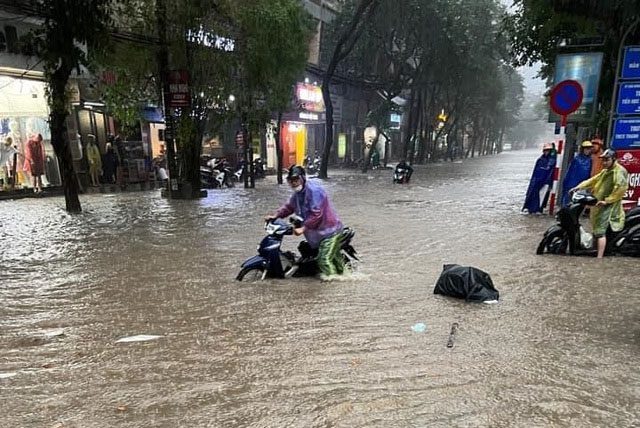Typhoon Doksuri is unlikely to impact the mainland of our country, but the northeastern region of the North China Sea will experience heavy rain and strong winds, posing significant dangers to vessels in the next 48-96 hours.
According to the National Center for Hydro-Meteorological Forecasting, this morning (July 24), Typhoon Doksuri has intensified to Category 13 and is expected to strengthen to Category 15-16 as it moves through the waters between Luzon (Philippines) and Taiwan (China), entering the northeastern part of the North China Sea. The meteorological agency assesses that Typhoon Doksuri is unlikely to affect the mainland of our country, but the northeastern region of the North China Sea will experience heavy rain and strong winds, which are very dangerous for vessels in the next 48-96 hours.
The Doksuri typhoon located east of the Philippines is considered to have a low chance of entering the South China Sea; however, this typhoon will bring adverse weather to parts of the South China Sea. It is forecasted to move primarily northwest and may intensify to Category 15, with gusts exceeding Category 17, classified as a super typhoon within the next two days as it approaches the northeastern region of Luzon (Philippines).

Typhoon Doksuri is forecasted to have a low chance of entering the South China Sea but will still cause heavy rain for the northern provinces of our country.
Subsequently, the typhoon is expected to continue moving northward and may make landfall in Fujian Province, China. Although Typhoon Doksuri has a low chance of entering the South China Sea, given its projected path, the super typhoon will still cause heavy rain and strong winds for the eastern region of the northern sea and the central South China Sea.
Additionally, the typhoon’s interaction will strengthen the southwest winds over the southern sea area from Bình Thuận to Cà Mau, including the waters of the Spratly Islands of Vietnam, reaching force 6, with gusts of force 8, causing rough seas along with heavy thunderstorms. On land, the strong southwest monsoon will lead to continuous heavy rain in the Central Highlands and Southern regions over the next few days.
Typhoon Doksuri offshore has nearly completely placed the northern region within a sub-tropical high-pressure belt, resulting in persistent hot weather until around the end of July 26-27. There is a possibility that after July 27, the northern region will experience widespread heavy rain due to the influence of Typhoon Doksuri.


















































